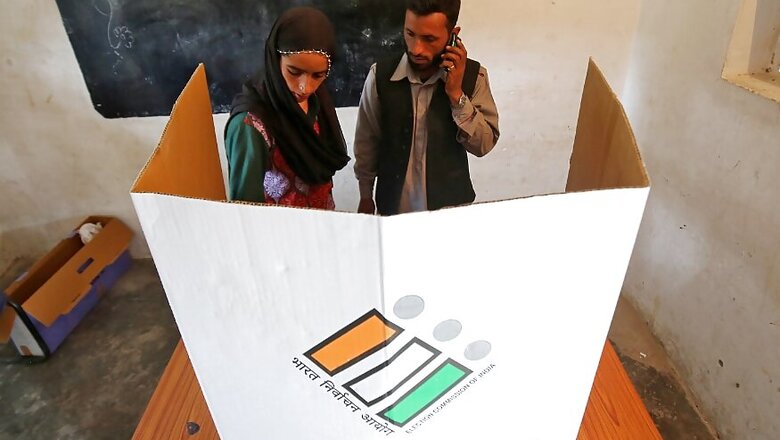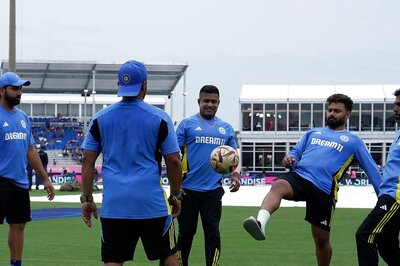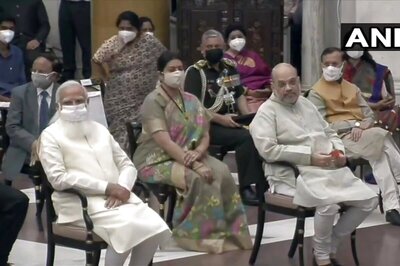
views
New Delhi: When the Narendra Modi-led National Democratic Alliance (NDA) in a historic mandate, stormed back to power and won 353 Lok Sabha seats on Thursday, it were the results from Uttar Pradesh and Bihar that drew maximum attention from the political pundits.
The BJP-led NDA coalition made massive gains in the Hindi heartland, and virtually decimated the Opposition’s caste-based alliances in UP and Bihar, where it triumphed over 103 of the total 120 seats.
In the build-up to the 2019 Lok Sabha elections, the two grand alliances or the mahagathbandhans – the Samajwadi Party (SP)-Bahujan Samaj Party (BSP) and Rashtriya Lok Dal in UP, and the Congress-Rashtriya Janata Dal with others in Bihar – were hailed as the main challengers to the Modi Juggernaut.
However, to everyone’s surprise the caste calculus of the alliances failed miserably, with the RJD drawing a blank in Bihar, even as the SP-BSP managed to bag 15 seats in UP.
The Bharatiya Janata Party (BJP) president Amit Shah, dubbed the party's success in these states as the rejection of caste-based politics and said that "it was a befitting reply" to those promoting it.
While the failure of SP-BSP is a case in point with several factors contributing to it, News18.com analysed constituencies across the country where Scheduled Castes (SCs) and the Scheduled Tribes (STs) form a significant share of the population to understand how they voted in 2019.
Based on Census 2011, there are just three constituencies where the SCs account for more than 40 per cent of the population. All three of these seats – Bangaon, Cooch Behar, and Jalpaiguri – fall in the state of West Bengal and have unanimously voted for the BJP.
Breaching the impregnable fortress of Trinamool Congress (TMC) in Bengal, which had won all three of these seats in 2014, the BJP has made significant overall gains in the state this election.
Apart from this, there are 16 constituencies where SC populations falls in the range of 30-40 per cent of the population and 129 others where the community constitutes for 20 to 30 per cent of the electorate.
On the back of its overall sweep, the saffron party bagged 80 of these 145 seats across states, while the majority of remaining seats were secured by regional parties like the Dravida Munnetra Kazhagam in Tamil Nadu, TMC in West Bengal, and Biju Janata Dal in Odisha, among others.
This staggering success of the BJP also invalidates the notion that the SCs do not vote for upper-caste parties, which the BJP is considered to be by some.
These seats however, don’t exhibit a fixed pattern of voting. Consider this, in 2014, the BJP won 67 of these seats but in 2009, the Congress had won the highest number of seats at 45 to emerge as the single-largest party.
How Scheduled Tribes Voted
There are 66 of the total 543 constituencies where STs constitute a substantial portion of the population spread across Rajasthan, Madhya Pradesh, Gujarat, Chhattisgarh, and Odisha. Among these, the Tribals account for more than 40 per cent of the electorate in 37 constituencies. In fact, majority of these seats include those where STs are as many as 60-70 per cent of the total population. However, as is the case with SC seats, these constituencies, too, tend to tilt towards the dominant discourse and pattern of voting.
For instance, the BJP won 22 of these seats in 2019, while it had bagged 23 in 2014. On both the occasions, the BJP registered a pan-India landslide. In contrast, when the Congress emerged as the largest party in 2009, the BJP could only manage to win nine of these seats as against the grand old party’s tally of 21.
Seats with relatively less concentrated tribal population behave the same way. Of the 11 seats with ST population in the range of 30-40 per cent and 18 seats with 20-30 per cent ST population, the BJP won 6 and 16, respectively this time. The party had won 14 of these 24 seats combined in 2014.
As the party made inroads in Odisha this time, its performance visibly improved over 2014. However, when in 2009, there was no such wave in favour of the BJP, the party could only secure eight of these seats, while Congress went home with 11.




















Comments
0 comment